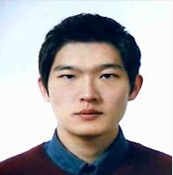In Situ Radiochromic Film Dosimetry Using Portable Spectrophotometer
Presentations
TH-IePD-TRACK 5-7 (Thursday, 7/29/2021) 3:00 PM - 3:30 PM [Eastern Time (GMT-4)]
Purpose: This study aims to report the performance of using a portable spectrophotometer as a reader for radiochromic film dosimetry. The study compares net optical density (net OD) of the EBT3 film between a typical flatbed scanner and a portable spectrophotometer.
Methods: The EBT3 films were irradiated by using 6 MV photon beam with 0 to 3 Gy. The films were read by the flatbed scanner (EPSON 10000XL) and the portable spectrophotometer (YS-3020, 3nh, China) at 10 min, 1 hour, 3 hours, 6 hours, and 24 hours after the irradiation. The net OD in red channel was acquired for each scanner. EBT3 films with 0.7 Gy and 1.8 Gy irradiation were read by the scanners and the measured doses were compared with the delivered doses.
Results: During 10 min to 6 hours, the curves from the portable spectrophotometer showed larger fluctuations in net OD than those from the flatbed scanner. Calibration curves at 6 hours and 24 hours after the irradiation were acquired. Dose responses of the portable spectrophotometer were 28.2% to 51.7% higher than those of the flatbed scanner. The EBT3 film with 0.7 Gy irradiation read by the portable scanner at 6 hours after the irradiation showed large discrepancy (17.7%) comparing with the actual delivered dose. The discrepancies were reduced to 6.6% at 24 hours after the irradiation. For the same delivered dose read by flatbed scanner, the difference between the actual and estimated were 5.8% and 4.5% for 6 hours and 24 hours, respectively.
Conclusion: The portable spectrophotometer has advantages over the flatbed scanner that it is much lighter, easier to use than the flatbed scanner. However, the portable spectrophotometer limits the film dosimetry to the point measurement and the impact of post-irradiation was more significant in the portable spectrophotometer.
Funding Support, Disclosures, and Conflict of Interest: This work was supported by the National Research Foundation of Korea (NRF) grant funded by the Korean government (No. NRF-2019M2A2B4096540)
ePosters
Keywords
Radiochromic Film, Dosimetry, Radiation Protection
Taxonomy
TH- Radiation Dose Measurement Devices: Radiochromic film
Contact Email



